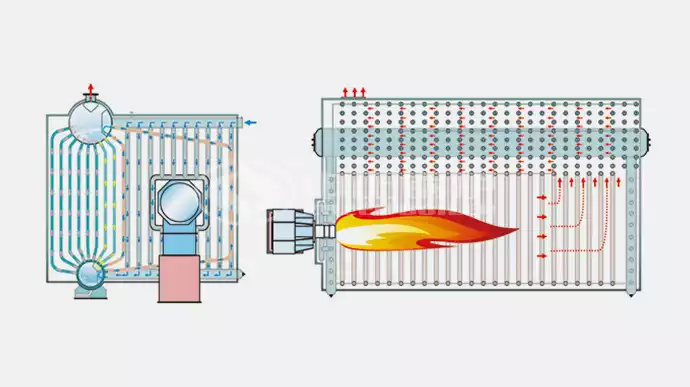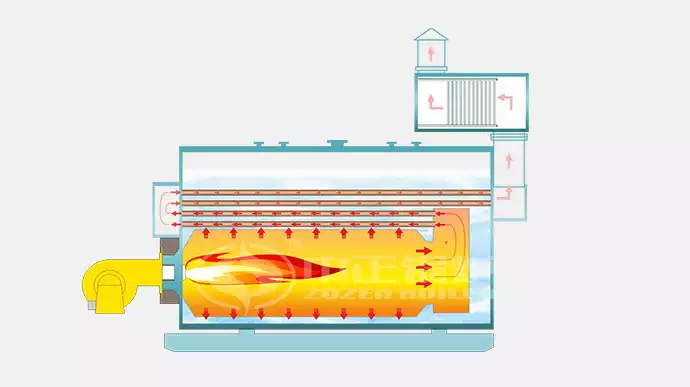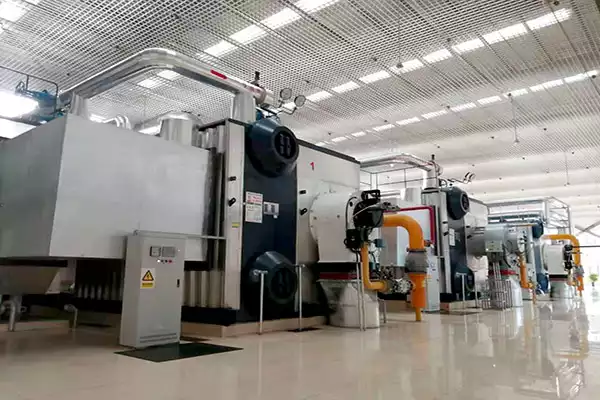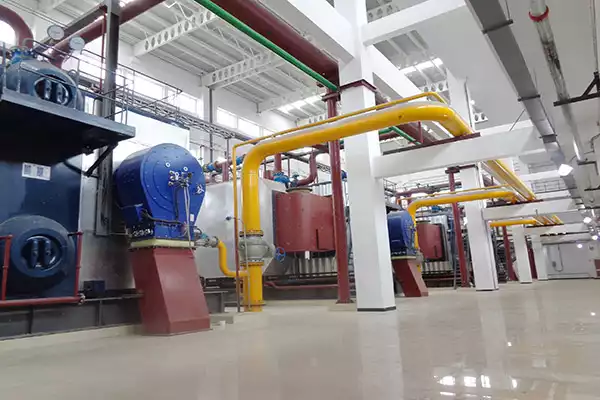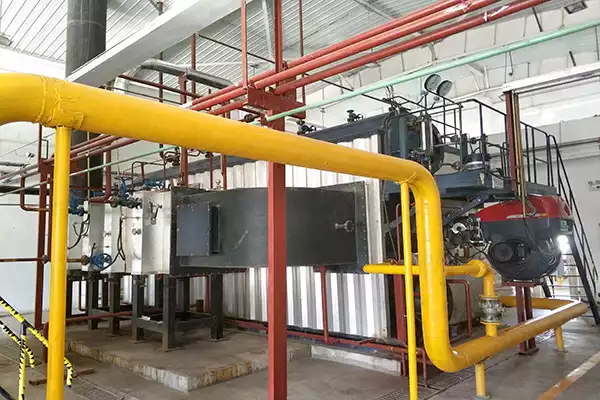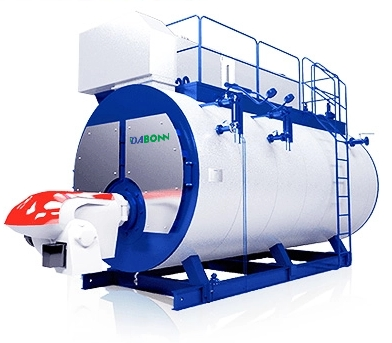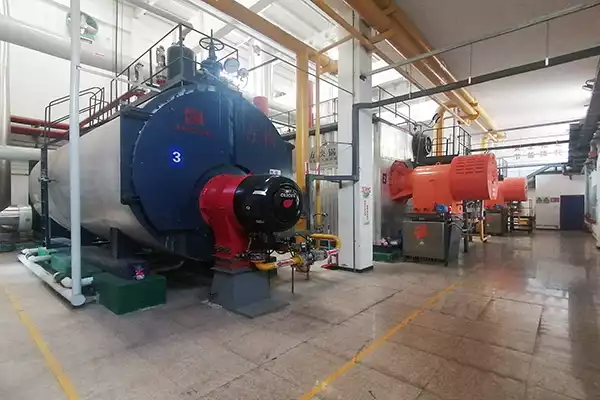
Introduction
In the boiler industry, there are two main types of boilers: water tubes and fire tubes. Both boilers use similar heating techniques but differ in how they operate. If you’re considering purchasing a new boiler or replacing your existing one, understanding these differences can help you make an informed decision that suits your needs. In this guide, we’ll start by explaining how each type of boiler works. Then we’ll compare their sizes, weights, capacities, and efficiency ratings before wrapping things up with a comparison of their advantages and disadvantages.
What is a Water Tube Boiler?
A water tube boiler refers to a boiler where high-temperature flue gas flows and releases heat outside the pipe, while water absorbs heat inside the pipe. Which water circulates through tubes inside the boiler. The heat that drives the process is transferred indirectly from the furnace to the liquid, which then evaporates and raises its pressure as it changes into steam.
Water tube boilers are used in large power plants, but they’re also found in smaller applications including residential heating systems and individual room furnaces.
What is a Fire Tube Boiler?
Fire tube boilers are also known as shell boilers. There is a large diameter drum, a fire tube, and a large number of thin tubes inside. The smoke generated by the combustion of fuel heats the water, steam, or steam-water mixture outside the smoke pipe, producing hot water. Fire tube boilers can be used for low-pressure steam or superheated steam, depending on the design of their water circulation system.
Main Difference
The furnace of a water tube boiler is placed outside the cylinder, and the volume of the furnace can be large or small, which can meet the requirements of combustion and increased evaporation.
The drum of a water tube boiler is generally not directly heated, and the pipes that contain water vapor are placed in the furnace and flue as heating surfaces, significantly improving heat transfer performance and safety performance.
Among the two, water tube boilers have smaller drum diameters, higher working pressure, smaller water capacity, better adaptability to load changes, and higher thermal efficiency compared to fire tube boilers.
The structure of a fire tube boiler is simple, with a fixed water level, low cost, and easy operation, while the structure of a water tube boiler is complex, requiring an additional dome steam chamber, which is expensive.
Working Principle Comparison
In a water tube boiler, water circulates in a closed circuit. Heat travels from the combustion chamber through the furnace’s tubes, then the water passes through the condenser, where it is cooled back to liquid form before returning to the starting point.
Water Tube Boilers are also known as “single pass” systems because there is only one trip for them through their various components:
- Combustion Chamber (heated by coal or oil) -> Tubes -> Heat Transfer Area Recirculation Pump -> Circulation Pump -> Water Tank
Fire Tube Boilers have an open circuit design where hot gases enter at one end of each tube and exit at another end due to pressure differences created by fans and draft hoods within each tube itself.
Size Comparison
Fire tube boilers are smaller than water tube boilers. A fire tube boiler can be as small as 32 inches in diameter, while a water tube boiler may need to be as large as 48 inches in diameter to achieve the same output. This makes fire tubes more compact and easier to install in tight spaces.
Weight Comparison
Water tube boilers are typically heavier than fire tube boilers due to their large size, although this depends on the size of the water tube boiler. The weight of a water tube boiler can range from 5 tons to 15 tons, while fire tube boilers tend to be lighter at around 1 ton.
Capacity Comparison
When it comes to capacity, water tube boilers have a higher power rating than fire tube boilers. This is because water tubes are larger and more efficient than fire tubes. The average capacity for a water tube boiler is 1 MW or more. Most fire tube boilers have capacities below 1 MW.
Efficiency Comparison
When it comes to efficiency, water tube boilers have the upper hand. Water tube boilers typically have an efficiency of 90% or above, while fire tube boilers tend to be closer to 80% efficient. The reason for this difference lies in the heating surface area and placement of tubes within each design:
- Water tubes are placed inside a boiler shell that contains steam and water, which means they get hotter than fire tubes do when exposed directly to heat from combustion gases or coal/wood fires.
- Fire tubes are surrounded by cold air rather than warm steam or hot water, so they don’t transfer as much heat into their surroundings as do their water-filled counterparts (and thus waste more energy).
Advantages Comparison
Advantages of water tube boilers
- Have a better heat transfer rate than fire tube boilers. This means that they can transfer more energy from the fuel to the water, which results in higher efficiency and lower operating costs.
- Have a longer lifespan than fire tube boilers because of their design (they have fewer moving parts).
- Are more efficient at turning fuel into heat and steam than fire tube boilers because they have better thermal conductivity between tubes and boiler walls, allowing for greater surface contact with the water inside them.
Advantages of fire tube boilers
- Better strength. Fire tube boilers have better strength than water tube boilers because the pressure vessel is made of steel and can withstand high temperatures. The pressure vessel of a water tube boiler is made of copper, which cannot withstand as much heat as steel.
- Cheaper to buy. A fire tube boiler costs less money to buy than a water tube boiler because it has fewer parts and materials used in its construction, such as iron pipes instead of copper ones, so there’s less labor involved in making them too!
Disadvantage Comparison
- Water tube boilers are more expensive than fire tube boilers.
- Fire tubes are less efficient than water tubes, which means they use more fuel to produce the same amount of heat or steam. This can be an issue if you have limited resources and need to conserve them as much as possible.
- The safety of a boiler depends on its design. But generally speaking, water tube boilers are safer. Because their construction is less likely to cause an explosion than fire tube designs that use high-pressure steam or hot gasses in closed systems (like those found in power plants).
Heat exchanger Comparison
In a water tube boiler, the heat exchangers are more complex. The tubes that transfer heat can be bent into different shapes and the fluid flow is often more turbulent than in fire tube boilers. This makes it possible for a single water tube boiler to have multiple steam drums and superheaters instead of just one or two like you’d find in a fire tube design.
In contrast, fire tube boilers have less complex heat exchangers due to their simpler design which calls for straight tubes that carry both fuel gas and combustion air through them (instead of separate pipes). This makes them easier to manufacture but also results in less efficient operation when compared with their cousins–especially when running at higher temperatures or pressures where turbulence becomes important!
Security Comparison
Water tube boilers are more secure than fire tube boilers. Water tube boilers have a tighter seal between the tubes and the shell of the boiler, which means that there’s less chance for steam and water to leak out. Fire tube boilers can also be more dangerous because if one of your flues gets blocked, it could cause pressure inside your boiler to rise dangerously high. Which could lead to an explosion or other damage.
Conclusion
In conclusion, water tubes and fire tube boilers are both great options for heating your home. They both have their pros and cons, but overall we think that water tube boilers are the better choice. Fangkuai mainly produces types of fire tube boilers: integrated steam boilers, split steam boilers, condensing steam boilers, horizontal internal combustion chamber combustion boilers, vertical fire tube chamber combustion boilers, etc. There are types of water tube boilers, such as double drum vertical water tube boilers, etc. If you want to learn about the detailed parameters and prices of , please contact us at +0086 186-2391-5479.
Get your best price
Quickly compare 3 FREE quotes
- Engineer quick quote
- The overall delivery speed is fast
- Financial choice
- Low installation costs and cost savings
25 years+ of boiler R&D
More than 20 innovative technologies
